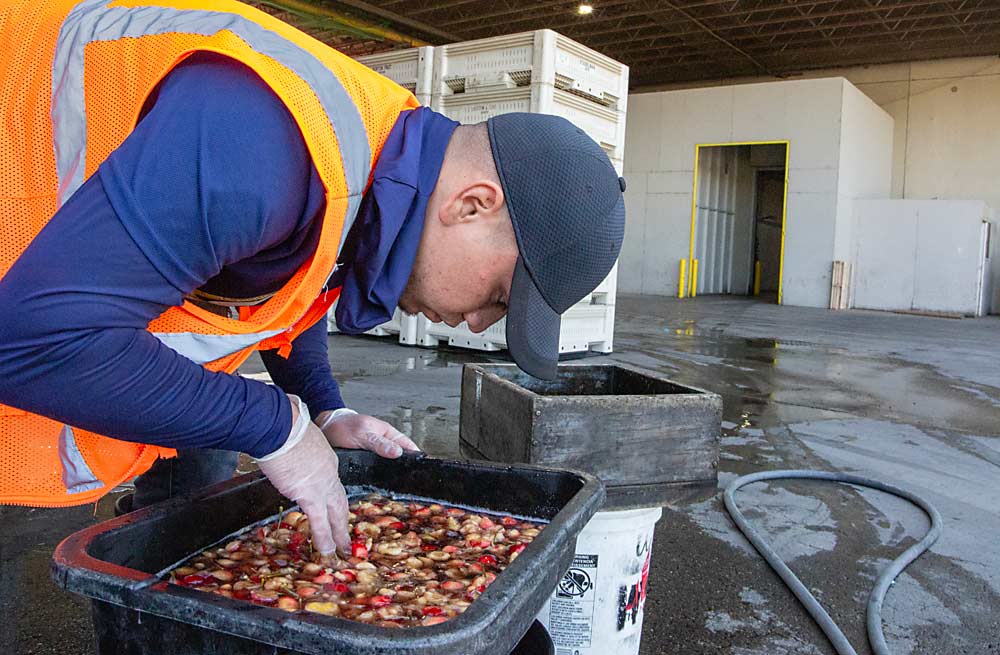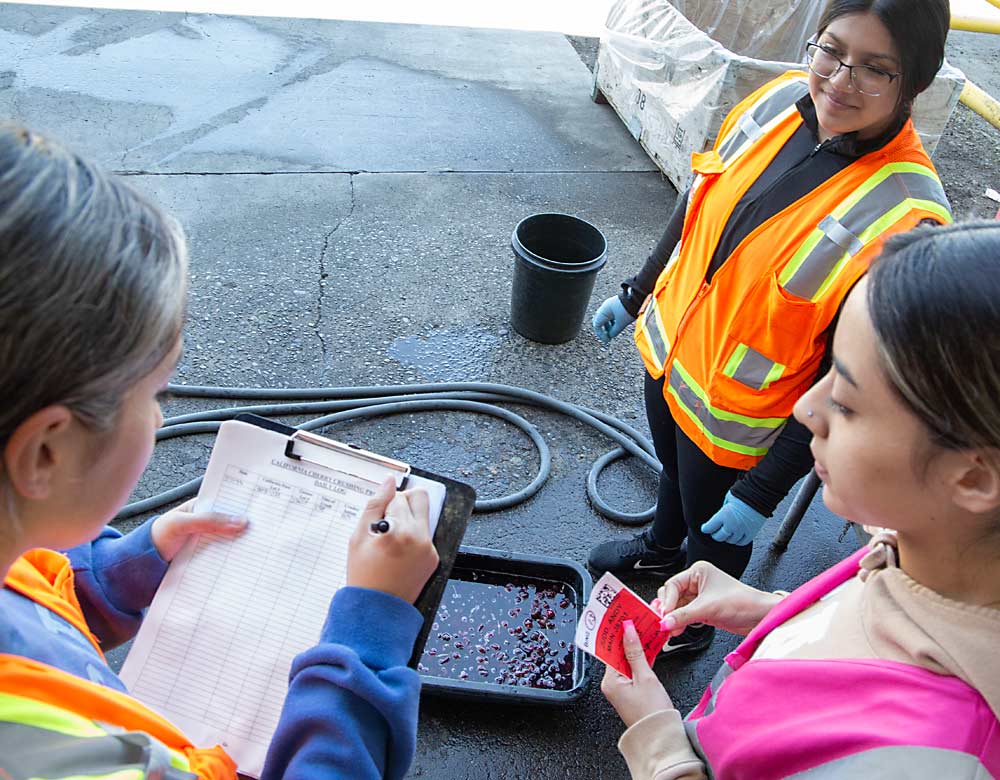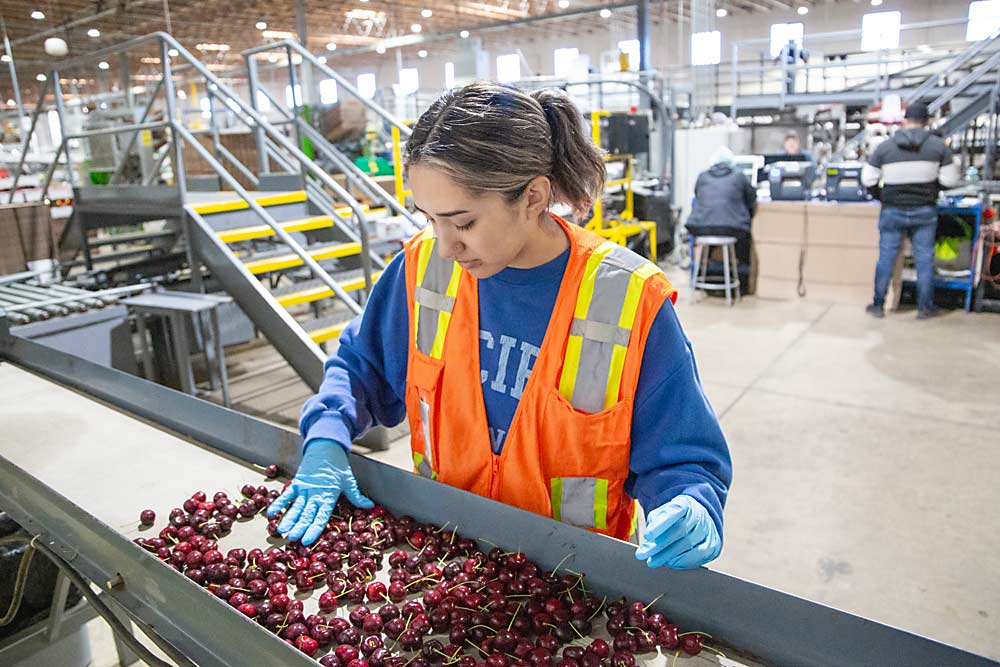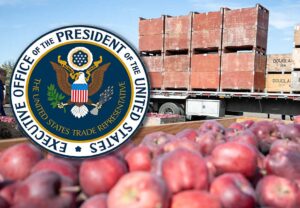
Northwestern U.S. cherry shippers have a new way of doing business with India, and a few companies have already taken advantage of it.
After decades of requiring fumigation, which heats and softens fruit, India’s phytosanitary standards now accept a “systems approach” for Pacific Northwest cherries.
The arrangement allows shippers to prove they follow a season-long method of keeping pests and diseases out of cherry shipments. The process starts in the orchard, follows fruit through the warehouse and ends with taping up boxes before they leave.
The new deal was struck toward the end of the 2022 season, but the Northwest had a small crop that year, so few boxes made it out under the new rules. This year, marketing officials expected roughly 10,000 20-pound box equivalents to be shipped to Indian ports.
The new method will mean better quality on store shelves in Indian cities.
“Avoiding fumigation is just good for cherries,” said Dave Martin, export manager for Stemilt Growers of Wenatchee.
Stemilt shipped cherries to India using the systems approach this season, which can be viewed as a series of best practices, Martin said.

“It sounds like a big word,” Martin said. “All it is, is a series of steps we take from the orchard to the packing house.”
Japan and California require most of the same steps. One of them is sampling cherries for insect larvae before packing, which is done by crushing and soaking them in a brown-sugar brine prior to a visual inspection.
With a population of 1.4 billion — now the biggest in the world — and rising wealth, marketers see potential in India.
Keith Hu, director of international operations for Northwest Cherries, does not expect the explosion of growth the industry saw in China several years ago. Nor is he seeking that. India’s market and its cold chain infrastructure are not yet reliable enough.
Hu, who made a publicity trip to a few Indian cities in July, plans to first develop relationships with some select, reliable vendors, to establish long-term trust.
Also, India is harder to reach. Several airlines fly direct from Sea-Tac airport in Seattle to cities on China’s east coast. Some fuselages and tails bear giant cherry graphics. But cherry flights to India usually make stops in the Middle East or London. A boat journey of at least a month is all but out of the question, Hu said.
However, consumer demand is there. During his trip, he saw cities with pockets of wealth and busy grocery stores that sell high-end imported goods. Northwest Cherries, which collectively markets fresh cherries from five Northwest states, recently promoted its fruit via social media with Sanjeev Kapoor, an Indian celebrity chef and author.

The challenge will be convincing shoppers that Northwest cherries are better than the competition from domestic producers, Turkey, Iran or Pakistan, Hu said.
“Our target consumers, they are aware of cherries, they’re just not aware of the premier cherries we can bring them,” Hu said.
Japan was the first country to adopt a systems approach for the cherry industry. India’s protocol is modeled somewhat after it. Hu hopes South Korea is next.
Fruit exports have seen tough times recently with a strong dollar, tariffs and disputes disrupting international trade.
“As the world gets smaller, the challenges get harder to export cherries around the world,” said Bryan Peebles, export sales manager of Chelan Fresh, a fruit marketing company that shipped cherries to India this year.
India has been a relative bright spot for tree fruit exports. In June, the country announced it would drop a 20 percent tariff on apple imports, enacted in 2018 in retaliation for the U.S. tariffs on steel and aluminum. The country still maintains a 50 percent duty on apples, 30 percent on pears and 20 percent on cherries.
The cherry effort in India formally started in 2010, said Riley Bushue, director of congressional relations and export programs for the Northwest Horticultural Council.
After years of technical back-and-forth between the U.S. Department of Agriculture’s Animal and Plant Health Inspection Service and India’s Ministry of Agriculture and Farmers Welfare, Indian officials visited port facilities in Seattle and orchards and warehouses in Central Washington, Bushue said. They continued deliberations, disrupted by COVID, and signed an agreement at the end of July last year.
“There was a lot of interest in this,” he said.
—by Ross Courtney







Leave A Comment